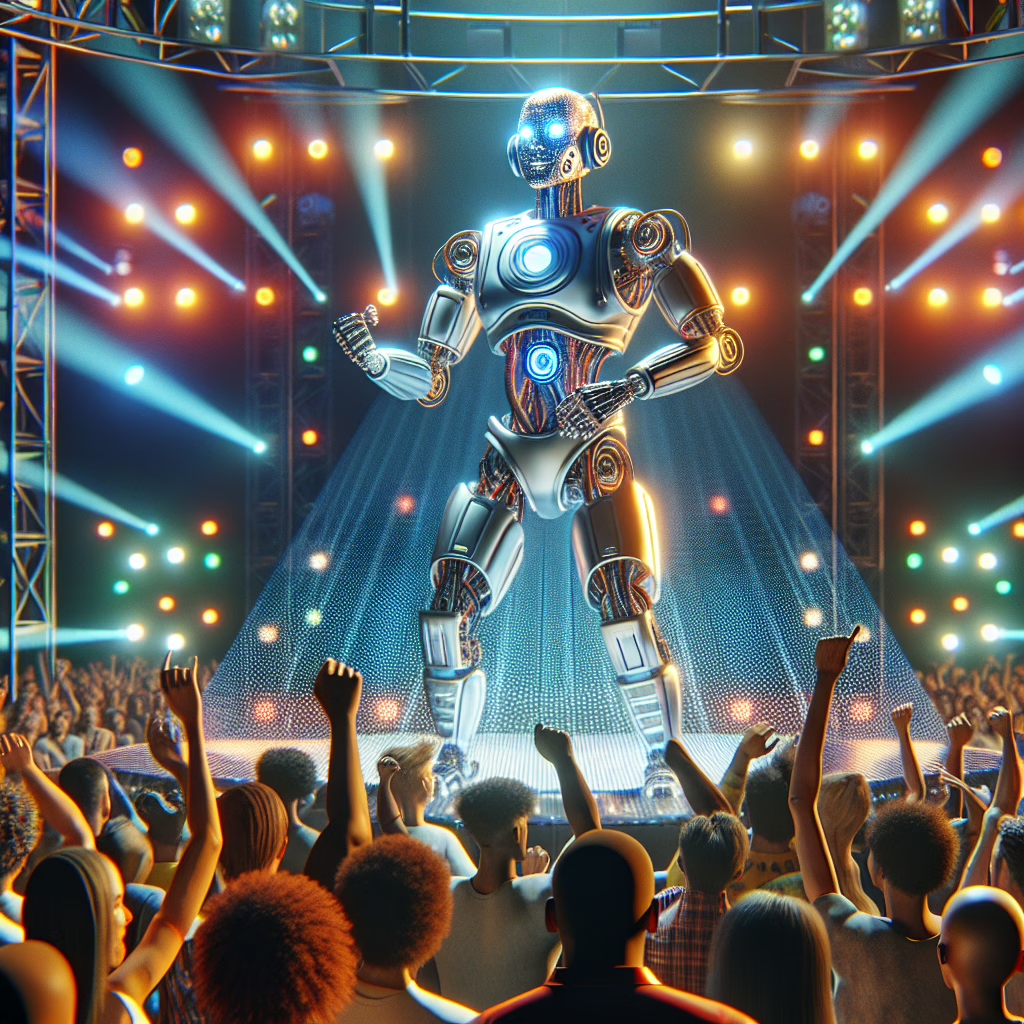In a dazzling display of technology and artistry, humanoid robot Adam made quite the entrance at a major Chinese music festival in 2025, stealing the spotlight from human performers and sending social media into a frenzy. If you thought the rise of robots was just a sci-fi fantasy, think again! This metallic maestro has become both a sensation and a source of heated debate among festival-goers and tech enthusiasts alike.
When Robots Rock: The Rise of Humanoid Performers
Imagine a world where your favorite artists are not just human but also humanoid robots—like Adam! This sleek, silver performer didn’t just stand there looking pretty; he was programmed to sing, dance, and interact with the audience. The event showcased an impressive display of what technology can achieve in entertainment. However, not everyone was ready to embrace this new era. Some attendees expressed feelings of unease about a robot stealing the show from human artists.
One festival-goer quipped, “Next thing you know, we’ll be cheering for robots while humans are relegated to the background like old VHS tapes!” A valid concern, considering how quickly technology is advancing. But let’s not forget that Adam is more than just bolts and wires; he’s also equipped with AI that allows him to learn from his performances and adapt to audience reactions. Talk about taking ‘audience engagement’ to a whole new level!
AI or Not? The Debate Over Humanoid Robots
The emergence of humanoid robots like Adam has ignited discussions about the role of AI in creative fields. Should we embrace these advancements or fear them? Some argue that humanoid robots could enhance live performances by providing unique experiences that human artists might not be able to replicate. Others worry that this could lead to job losses for musicians and performers.
It’s a classic case of technology versus tradition! In one corner, we have innovation—a shiny new toy that can entertain us in ways we never imagined. In the other corner, we have nostalgia for the good old days when music was made by people who poured their hearts into every note. As much as we love our playlists filled with human emotion, it’s hard to deny that watching Adam belt out tunes with robotic precision is oddly captivating.
Humanoid Robots: Here to Stay?
As we continue to explore the capabilities of humanoid robots, one thing is clear: they’re here for a long time. Major tech companies are investing heavily in AI and robotics, indicating that we’ll likely see more performers like Adam gracing stages around the globe.
Who wouldn’t want to attend a concert where you might catch a robot covering your favorite pop hits while simultaneously calculating your optimal dance moves? Sure, it sounds like something out of a futuristic novel, but it’s becoming our reality faster than we can say “robot uprising.”
The Future of Music Festivals: A Harmonious Blend?
So what does this mean for the future of music festivals? Will we see more collaborations between human artists and humanoid robots? Imagine headliners joining forces with AI counterparts for dynamic duets! The possibilities are endless (and somewhat terrifying). At least we won’t have to worry about late arrivals or no-shows; robots don’t have concert jitters!
As for now, let’s keep an open mind and maybe even embrace our new robot friends. After all, if they can entertain us while efficiently calculating ticket sales and concessions, why not? We could use some help getting through those long festival lines.
In summary, humanoid robot Adam’s performance at the major Chinese music festival serves as both an exciting glimpse into our tech-driven future and a catalyst for important conversations about creativity and authenticity in the arts. As we navigate this brave new world together, it’s essential to find ways for humans and robots to coexist harmoniously on stage—and perhaps even in our hearts!
What do you think about humanoid robots performing at music festivals? Are they enhancing our experience or taking away from it? Share your thoughts in the comments below!
A big thank you to Rude Baguette for their original article that inspired this piece!

